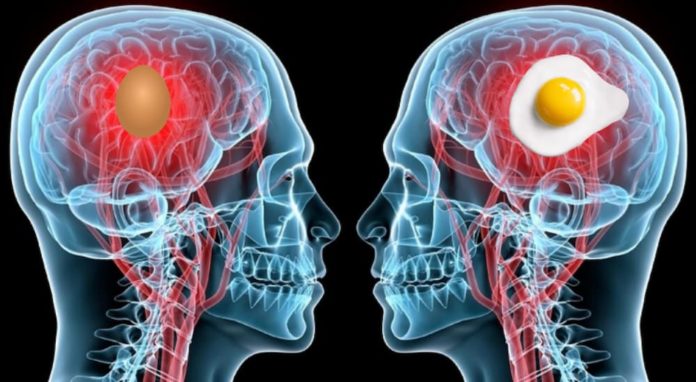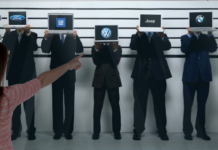Now, before you email me a lengthy analysis of your own stupidity, answering this question in great detail and with numerous charts and graphs, let me say this: I’m asking it rhetorically. That is to say, as a rhetorical device to get your attention and make you start reading. I don’t actually care why you’re so stupid – we’ve established that you are, and that’s enough.
Not really; it’s never enough. But seriously, I’m not asking you in particular – I don’t know you, and your intellect is of very little importance to me, to be honest. I’m now and always have been singularly interested in my own robust intelligence and the handsome girth of my powerful, throbbing wellspring of knowledge. What was I talking about?
Oh, that’s right, let me start over…
Drivers of America: Why are You So Stupid?
That’s better, right? More pointed – captures the attention a bit more acutely. I’ve worked this attention-grabbing headline of mine down to a scalpel rather than a cleaver. Cuts either way, but now it’s more precise. Now that I have your attention, let’s take a moment to look at something that’s actually important: safety on the road. Specifically, the utter and truly staggering lack of safety demonstrated on the road by the immature, gibbering hordes of motorists killing themselves and each other during these uncertain times.
Good News – Some of You Aren’t Stupid.
Before we go any further, let’s clarify something: I keep calling you stupid, but really I’m talking about recklessness. Do I see these two things as synonymous? Somewhat, yes. Our species prides itself on intellect and on our ability to grasp our own mortality. Driving like a bat out of hell and getting yourself, or worse, someone else, dead because of it is, therefore, an act of stupidity that flies against our own litmus test for enlightenment.
Now then, the good news: fatalities on the road are, overall, down. Better yet, this is not a new thing. There’s been an ongoing trend of decreased numbers of traffic fatalities since they reached a relative high in 2016. Since then, due to efforts by the National Highway Traffic Safety Administration (NHTSA) and others, the numbers have been going down steadily each year. While some accidents in this world are unavoidable and beyond the scope of prevention, the reality is that a lot of deadly collisions are caused by reckless driving.
But, in 2019, overall traffic fatalities were down once again (the numbers were recently released by the NHTSA, that’s why I’m telling you about this now). In 2016, after the numbers had been going down for a few years, traffic fatalities in the US spiked up to 37,806. As I said, however, the numbers started going down. To make this simple, here’s what I’m talking about:
Total Traffic Fatalities in the US:
- 2016: 37,806
- 2017: 37,133
- 2018: 36,835
- 2019: 36,096
Looks pretty good, right? People have been driving slower, being more careful, and safety features in vehicles have been getting more advanced. This last point is especially important because, at the end of the day, we can’t completely root out human stupidity, but we can try to implement enough fail-safes to get around it. At least, that’s the dream.
Bad News – A lot of You Are
Just like everyone else, the folks at the NHTSA went into 2020 feeling hopeful, optimistic about the future, and looking forward to another year of steady improvement in terms of vehicle safety. They had plans, with ad campaigns slated to start in order to try to encourage people to be more mindful of the dangers of distracted driving. As an aside here, I’d like to mention that the single most common type of distraction that results in a fatal collision isn’t a mobile phone; it’s not texting or checking your makeup or even talking to another passenger; no, it’s daydreaming. That’s right – people get so confident behind the wheel, they let their mind wander while controlling a few thousand pounds of machinery, and someone dies. But I digress…
Like the rest of us, 2020 came along and unceremoniously sat on the face of the NHTSA, casting their goals aside. You’ve been here; you know what happened. Pandemic, no toilet paper, face masks, etc.
And the result? Fewer traffic deaths in 2020 than in 2019 – fantastic! I mean, you’d expect fewer deaths with so many stay-at-home orders and far less traffic on the road. And there’s the rub. You see, while there are fewer deaths in 2020 so far, compared to 2019, when you adjust that number for the number of miles being driven, which is a far more accurate comparison, things become much worse.
Based on Vehicle Miles Traveled (VMT), there were an average of 1.06 deaths per 100 million VMT in 2019. So far, in 2020, there have been 1.25 deaths per 100 million VMT. For the record, that’s a huge increase. And why, you might ask, have the numbers gone up so much?
According to the NHTSA, people are driving faster – much faster. Despite the fact that traffic stops have been fewer in number during this whole debacle, during a two week period, Georgia state police reported giving citations to 140 drivers for speeding faster than 100 mph. At one point, during this thing, California citations for drivers going faster than 100 mph increased by 87%. What the hell, people?!
Oh, and the number of corpses from collisions coming into morgues and hospitals with drugs and alcohol in their system has also increased. According to the NHTSA, the number of people who died in traffic “accidents” who had alcohol in their system went from 21.3% to 26.9%. The presence of cannabinoids (that’s pot) went from 21.4% to 31.2%, and opioids in people’s systems – sorry dead people’s systems – increased from 7.6% to 12.9%!
In addition to this, ejection rates in fatal collisions also increased, particularly for males between the ages of 18 to 34 years old and in rural areas. In other words: people weren’t wearing their seatbelt, and they were violently thrown from their vehicle during a collision. Car stops, driver keeps going, driver goes splat!
What’s to Be Done?
There’s a bright spot here, dear reader, and that’s the silver lining I’m going to conclude with: none of this is beyond our control. These people aren’t dying due to an unseen illness or wanton, violent police brutality. Oh no, they’re dying because they’re driving too fast, driving under the influence of drugs and alcohol, and not wearing a seatbelt. So what can be done? How can you help fix this terrible problem?
Use your brain! Don’t drive over 100 mph just because there’s little or no traffic on the road – a lack of traffic won’t help you when you fly off the road after losing control on a turn or prevent you from rolling over because you don’t know how to drive safely at that kind of speed. Don’t drive while under the influence of drugs or alcohol. I know we’re all self-medicating – it’s the human condition – but stay home! And wear your seatbelt. You’ve been told that since you were five years old – I shouldn’t have to tell you this.
Because here’s the simple truth, oh reader mine: I would very much like you to keep reading my ridiculous nonsense for as long as I can write it. So be smart, slow down, and drive safely.
Editor’s Note: We’ve been assured that the world is bad enough out there without losing more people to completely avoidable collisions. Please remember that driving involves operating extremely powerful machinery at speeds faster than you can easily comprehend, and take a moment to consider that powerful responsibility. Thank you.












